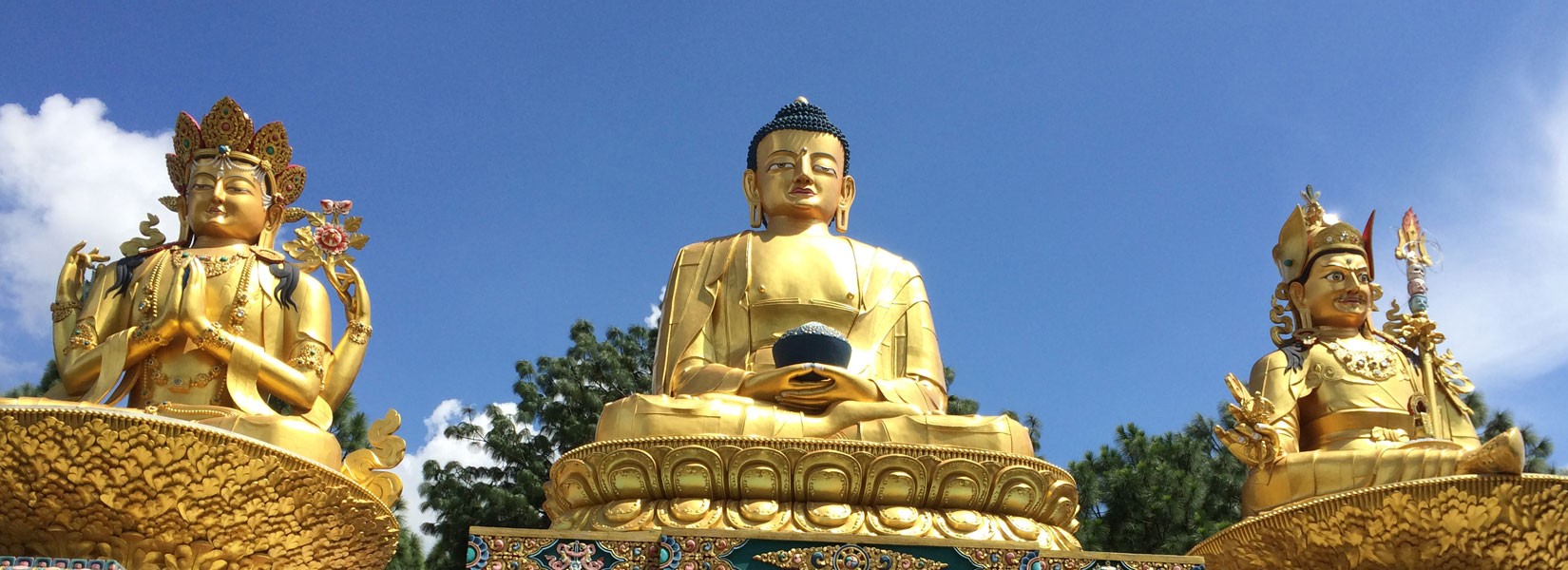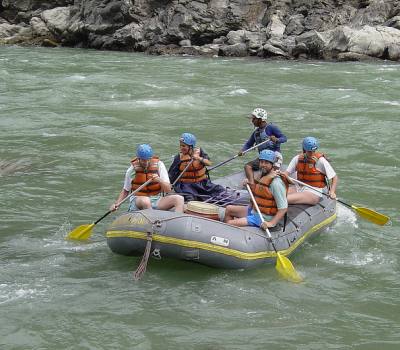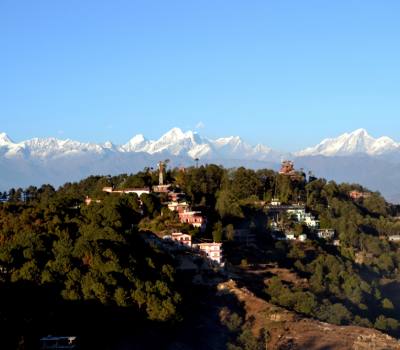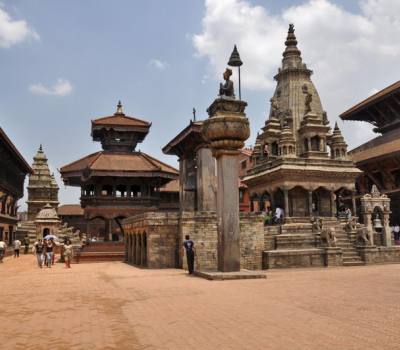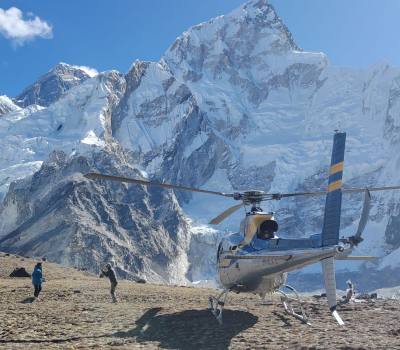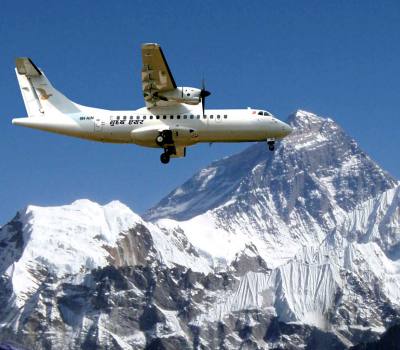Kathmandu Sightseeing
The coronary heart of Kathmandu this ancient square crowded with palaces and temples, which include the modern-day incarnation of the Kasthamandap or “timber house” that offers the city its name. The square has been in lively use since the construction of a palace around one thousand adverts. This website is the maximum popular UNESCO international heritage site in Nepal. Magical inside the very early morning and night, Durbar square may be an arduous experience because of the overpowering variety of young men presenting to be “guides.” Be the company with pronouncing “no” in case you aren't fascinated, but realize that looking at a map, or even status nonetheless for a second could be an invitation to a dozen different could-be “helpers”. Ask Destination Unlimited Treks & Expeditions if you do need a tour manual for sightseeing excursion with protection & comfort. an area now not to be missed is a go to Kathmandu Durbar Square Museum.
important attractions around Kathmandu Durbar Square
The Taleju Temple is the tallest of all systems, constructed via King Mahendra Malla in 1549 ad. This temple is open to the general public for one day each year throughout the Dashain festival.
The Jagannath Temple, constructed within the sixteenth century is thought for the captivating erotic figures carved on the wood struts.
The Kal Bhairav, one in all the most important seventeenth-century stone statues in Kathmandu, representing the terrifying factor of Lord Shiva.
Sweta-Bhairav – the temple is open to the general public as soon as in yr in the course of Indra Jatra competition.
The seventeenth-century Kumari Temple (the temple of dwelling Goddess) is an instance of enormously advanced Nepali craftmanship.home of “the Kumari”, or residing goddess, a younger woman. The south facet of Durbar square, Kaandasthamp, from which Kathmandu derives its name, is stated to were constructed from the wood of a single tree.
Nautalle Durbar (the 9 storyed palace)
Patan Durbar square
Patan Durbar rectangular complex is possibly the maximum photographed of the 3 durbar squares. positioned in the heart of Patan town, this was as soon as the palace of the kings of Patan. The rectangular is a display of the Newari structure that had reached its top throughout the reign of Malla kings who have been great builders and purchasers of the humanities. The palace has three major courtyards: the crucial and the oldest is Mul Chowk. To the west of the complicated are a dozen free-standing temples of various sizes and constructed in special styles. A masterpiece in stone, the Krishna Temple, Bhimsen Temple, the Golden Temple of Hiranya Varna Mahavira and Sundari Chowk mark the artistic brilliance of the Newar craftsmen of that generation. The Sundari Chowk with the sunken bathtub of Tusha Hiti, showcases amazing woodcarvings, stone, and metallic sculpture. like the other palaces, Patan Durbar rectangular additionally houses a temple dedicated to Taleju Bhawani.
Some critical monuments to peer on this place are:
The Golden Gate and golden windows of the antique palace
The well-known Krishna Temple with 21 golden pinnacles.
the tub with many carvings in stone at Sundari Chowk.
The Taleju Temple.
The temple of Bhimsen with an incredible golden balcony overlooking the square.
Char-Narayan temple, which is among the best examples of woodcarvings.
Chyasi Dega
Manga Hiti
Mul-Chowk
Bouddhanath
The tremendous structure of Bouddhanath is certainly inspiring. The 36-meter-high stupa of Bouddhanath is certainly one of the largest stupas in South Asia. With limitless monasteries surrounding it, Bouddhanath is the center of Tibetan Buddhism in Nepal. built in the form of a mandala designed to duplicate the Gyangtse of Tibet, the stupa turned into renovated via Licchavi rulers inside the 8th Century. The place of the stupa is interesting as it as soon as lay on the historic trade course to Tibet and it become here that Tibetan merchants rested and presented prayers for centuries. Boudha even these days has a sturdy Tibetan presence as limitless Tibetan refugees observed a home around the stupa. On pinnacle is the harmika and on each side are painted the all seeing eyes of the Buddha symbolizing consciousness. the cover has thirteen levels. At floor stage there may be a brick wall with 147 inches and 108 pics of the meditational buddha inset behind copper prayer wheels.
Trip Highlights of Kathmandu Sightseeing
1. Pashupatinath Temple
- Significance: One of the holiest Hindu temples dedicated to Lord Shiva, located on the banks of the Bagmati River.
- Highlights: Witness the temple's stunning architecture, observe the cremation ghats along the river, and experience the evening aarti ceremony.
2. Swayambhunath Stupa (Monkey Temple)
- Significance: An ancient religious complex atop a hill, revered by both Buddhists and Hindus.
- Highlights: Enjoy panoramic views of the Kathmandu Valley, interact with the resident monkeys, and explore the rich iconography of the stupa.
3. Boudhanath Stupa
- Significance: One of the largest stupas in the world and a major center of Tibetan Buddhism.
- Highlights: Circumambulate the stupa with pilgrims, spin the prayer wheels, and visit the surrounding monasteries and Tibetan shops.
4. Kathmandu Durbar Square
- Significance: A historic square that served as the royal palace for the Malla kings and later the Shah dynasty.
- Highlights: Admire the intricately carved wooden architecture, visit the Hanuman Dhoka Palace, and see the Kumari Ghar, the residence of the living goddess Kumari.
5. Patan Durbar Square
- Significance: A UNESCO World Heritage Site located in the city of Patan, also known as Lalitpur.
- Highlights: Explore the ancient palace complex, visit the Krishna Mandir, and stroll through the square's numerous temples and courtyards.
6. Bhaktapur Durbar Square
- Significance: Another UNESCO World Heritage Site, known for its well-preserved medieval architecture and culture.
- Highlights: See the 55-Window Palace, Vatsala Temple, and the iconic Nyatapola Temple. Enjoy the traditional pottery square and local handicrafts.
7. Garden of Dreams
- Significance: A neo-classical garden located in the heart of Kathmandu, offering a peaceful retreat from the city's hustle and bustle.
- Highlights: Relax in the beautifully landscaped gardens, enjoy a meal at the Garden of Dreams' cafe, and appreciate the historical architecture.
8. Thamel
- Significance: The vibrant tourist district of Kathmandu, known for its lively atmosphere.
- Highlights: Shop for souvenirs, enjoy a variety of restaurants and cafes, experience the nightlife, and explore narrow streets filled with colorful shops.
9. Asan Bazaar
- Significance: One of the busiest and oldest markets in Kathmandu.
- Highlights: Experience the local market scene, buy spices, vegetables, and traditional items, and enjoy the lively atmosphere.
10. Narayanhiti Palace Museum
- Significance: The former royal palace of the Shah dynasty, now a museum.
- Highlights: Explore the opulent rooms, learn about the history of the Nepali monarchy, and see the site of the infamous royal massacre of 2001.
11. Kopan Monastery
- Significance: A Tibetan Buddhist monastery located on a hilltop near Boudhanath.
- Highlights: Attend meditation classes, enjoy the serene environment, and participate in spiritual retreats.
12. Chandragiri Hills
- Significance: A hilltop destination accessible by cable car, offering panoramic views of the Kathmandu Valley and the Himalayan range.
- Highlights: Ride the cable car, visit the Bhaleshwor Mahadev temple, and enjoy hiking and nature walks.
These highlights provide a diverse and enriching experience of Kathmandu, showcasing its religious, cultural, historical, and natural attractions.
Outline Itinerary:
- Day 01: Kathmandu sightseeing day tour: This day we will visit 4 different world heritage sites
Detail Itinerary
- Day 01 :Kathmandu sightseeing day tour: This day we will visit 4 different world heritage sites 1. Kathmandu Durbar Square
2. Swoyambhunath
3. Pashupatinath Temple
4. Boudhanath Stupa
1. What are the must-visit places in Kathmandu?
Must-visit places include:
- Pashupatinath Temple
- Swayambhunath Stupa (Monkey Temple)
- Boudhanath Stupa
- Kathmandu Durbar Square
- Patan Durbar Square
- Bhaktapur Durbar Square
- Garden of Dreams
- Thamel
2. What is the best time to visit Kathmandu?
The best time to visit is during the spring (March to May) and autumn (September to November) seasons when the weather is pleasant, and the skies are clear.
3. How can I get around Kathmandu for sightseeing?
- Taxis: Widely available and convenient for short distances.
- Rickshaws: Ideal for exploring Thamel and nearby areas.
- Private Cars: Can be hired for the day through hotels or travel agencies.
- Walking: Many tourist sites are within walking distance in central Kathmandu.
4. Are there any entry fees for the major tourist sites?
Yes, most major sites charge an entry fee:
- Pashupatinath Temple: Around NPR 1,000 for foreign tourists
- Swayambhunath Stupa: NPR 200
- Boudhanath Stupa: NPR 400
- Kathmandu Durbar Square: NPR 1,000
- Patan Durbar Square: NPR 1,000
- Bhaktapur Durbar Square: NPR 1,500
5. What should I wear when visiting religious sites in Kathmandu?
- Dress modestly, covering shoulders and knees.
- Remove shoes before entering temples and religious buildings.
- Be respectful of local customs and practices.
6. Is it safe to travel in Kathmandu?
Kathmandu is generally safe for tourists. However, standard travel precautions should be taken:
- Keep an eye on personal belongings.
- Avoid isolated areas at night.
- Be cautious of traffic when walking.
7. What local foods should I try in Kathmandu?
- Dal Bhat: Lentil soup with rice and vegetables.
- Momo: Nepali-style dumplings, either steamed or fried.
- Newari Cuisine: Including dishes like Samay Baji, Yomari, and Chatamari.
- Lassi: A traditional yogurt-based drink.
8. Are there guided tours available for sightseeing?
Yes, many guided tours are available, ranging from half-day to full-day tours. These can be arranged through travel agencies, hotels, or online booking platforms.
9. Can I use credit cards in Kathmandu?
Credit cards are accepted in most hotels, restaurants, and larger shops in Kathmandu. However, it is advisable to carry some cash for smaller establishments and markets.
10. What language is spoken in Kathmandu, and will I face a language barrier?
The primary language spoken is Nepali. English is widely understood and spoken in tourist areas, hotels, and restaurants.
11. Are there ATM facilities available in Kathmandu?
Yes, ATMs are widely available in Kathmandu, especially in tourist areas like Thamel. Ensure your bank cards are activated for international transactions.
12. Do I need to bargain while shopping in Kathmandu?
Bargaining is common in markets and shops in Kathmandu, especially for souvenirs and handicrafts. However, prices in restaurants and established stores are usually fixed.
13. What are some unique souvenirs to buy in Kathmandu?
- Handicrafts: Traditional Nepali crafts, including prayer wheels, singing bowls, and Thangka paintings.
- Pashmina: High-quality shawls and scarves.
- Tea and Spices: Locally produced tea and spices.
- Jewelry: Silver and beaded jewelry.
14. Is it necessary to tip in Kathmandu?
Tipping is appreciated but not mandatory. A 10% tip is customary in restaurants. For guides and drivers, tipping is at your discretion based on the level of service.
15. Are there any cultural etiquettes I should be aware of?
- Always ask for permission before taking photos of people, especially in rural areas.
- Avoid pointing your feet at people or religious objects.
- Use your right hand or both hands together when giving or receiving something.
Quick Enquiry
| No of people | Price P.P |
| 1-1 Pax | US$ 65 |
Similar Trips
-
Rafting Day Trips
DURATION: 1 Day -
Nagarkot Sunrise Day Trip
DURATION: 1 Day -
Bhaktapur Durbar Square Day Trip
DURATION: 1 Day -
Mount Everest Helicopter Tour
DURATION: 5 Hours -
Mt. Everest flight Day Trip
DURATION: 1 Day

